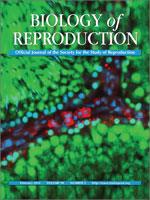Kisspeptin has emerged as the most potent gonadotropin-releasing hormone (GnRH) secretagogue and appears to represent the penultimate step in the central control of reproduction. In the sheep, we showed that kisspeptin could be used to manipulate gonadotropin secretion and control ovulation. Prompted by these results, we decided to investigate whether kisspeptin could be used as an ovulation-inducing agent in another photoperiodic domestic mammal, the horse. Equine kisspeptin-10 (eKp10) was administered intravenously as bolus injections or short- to long-term perfusions to Welsh pony mares, either during the anestrus season or at various stages of the cycle during the breeding season. In all the experimental conditions, eKp10 reliably increased peripheral concentrations of both luteinizing hormone and follicle-stimulating hormone. The nature of the response to eKp10 was consistent across experimental conditions and physiological states: the increase in gonadotropins was always rapid and essentially transient even when eKp10 was perfused for prolonged periods. Furthermore, eKp10 consistently failed to induce ovulation in the mare. To gain insights into the underlying mechanisms, we used acute injections or perfusions of GnRH. We also cloned the equine orthologues of the kisspeptin precursor and Kiss1r; this was justified by the facts that the current equine genome assembly predicted an amino acid difference between eKp10 and Kp10 in other species while an equine orthologue for Kiss1r was missing altogether. In light of these findings, potential reasons for the divergence in the response to kisspeptin between ewe and mare are discussed. Our data highlight that kisspeptin is not a universal ovulation-inducing agent.
How to translate text using browser tools
15 January 2014
Acute Injection and Chronic Perfusion of Kisspeptin Elicit Gonadotropins Release but Fail to Trigger Ovulation in the Mare
Caroline Decourt,
Alain Caraty,
Christine Briant,
Daniel Guillaume,
Didier Lomet,
Didier Chesneau,
Lionel Lardic,
Guy Duchamp,
Fabrice Reigner,
Philippe Monget,
Laurence Dufourny,
Massimiliano Beltramo,
Hugues Dardente
ACCESS THE FULL ARTICLE

Biology of Reproduction
Vol. 90 • No. 2
February 2014
Vol. 90 • No. 2
February 2014




